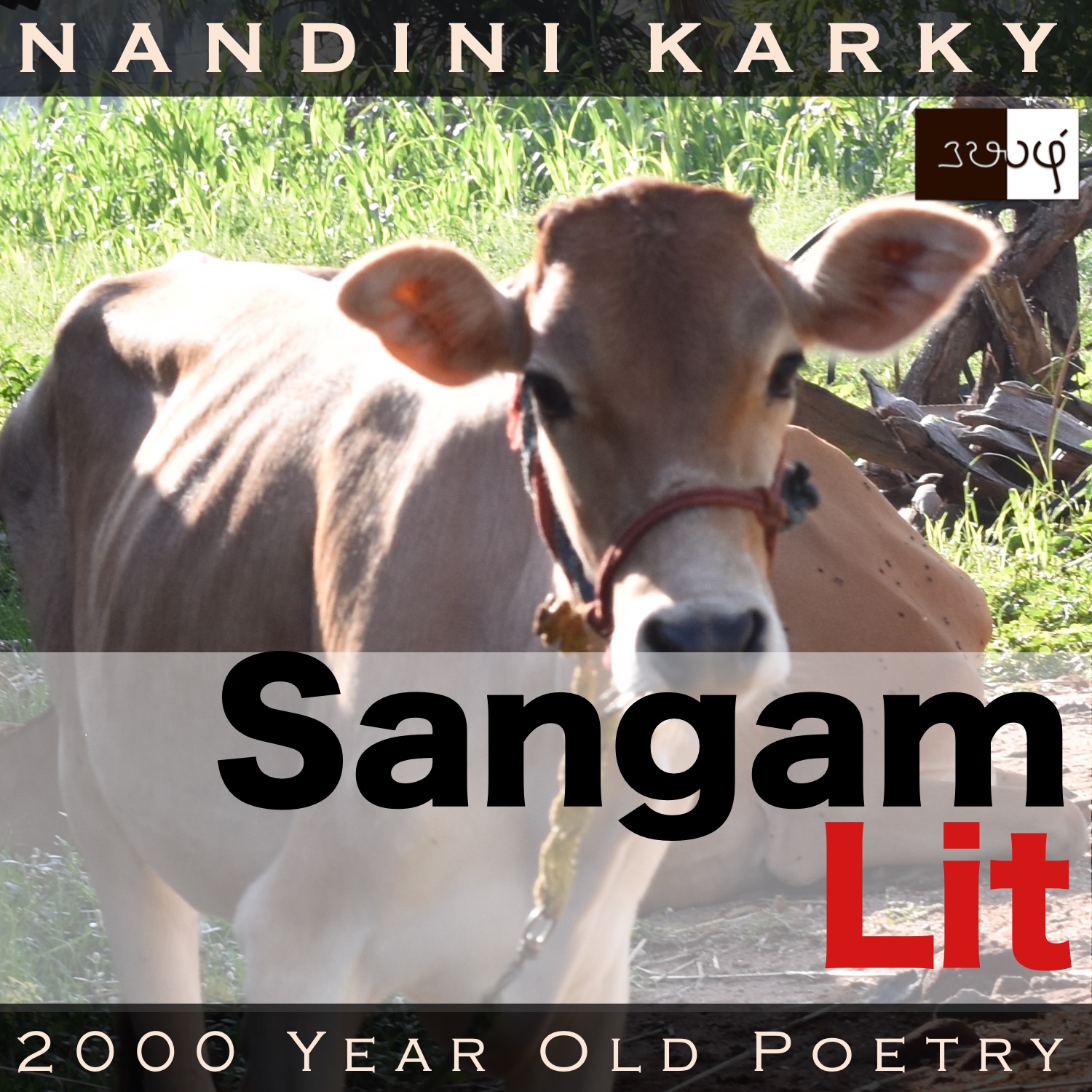Podcast: Play in new window | Download
Subscribe: Apple Podcasts | Spotify | Amazon Music | Android | iHeartRadio | TuneIn | RSS | More

In this episode, we listen to a description of a beloved in the words of a heart in love, as depicted in Sangam Literary work, Kurunthogai 132, penned by Sirakudi Aanthaiyaar. The verse is situated in the hills of ‘Kurinji’ and speaks in the voice of the man to his friend, in response to the friend’s words chiding the man for his unstable behaviour after falling in love.
கவவுக் கடுங்குரையள்; காமர் வனப்பினள்;
குவவு மென் முலையள்; கொடிக் கூந்தலளே-
யாங்கு மறந்து அமைகோ, யானே?- ஞாங்கர்க்
கடுஞ் சுரை நல் ஆன் நடுங்கு தலைக் குழவி
தாய் காண் விருப்பின் அன்ன,
சாஅய் நோக்கினள்-மாஅயோளே
‘Oh! She tugs at my heart’ cries a voice from the core! Beginning with ‘கவவுக் கடுங்குரையள்’ meaning ‘a girl who is quick to embrace’, the verse gives a hint about this speaker’s admiration. In successive definitions ‘காமர் வனப்பினள்’ meaning ‘a girl with desirable beauty’ and ‘கொடிக் கூந்தலளே’ meaning ‘a girl with flowing tresses’, that admiration is accentuated. The question ‘யாங்கு மறந்து அமைகோ’ meaning ‘how can I live forgetting her’ throbs with the man’s strong feelings. From the sphere of feelings, the verse shifts to the real world in ‘கடுஞ் சுரை நல் ஆன்’ referring to ‘a cow with udders, brimming with milk’, and ‘நடுங்கு தலைக் குழவி’ meaning ‘a calf with a trembling head’. Ending with ‘மாஅயோளே’ meaning ‘a girl with dark skin’, the verse makes the subject of this rumination clear and welcomes us to know more!
A girl extraordinaire, that sounds like! The context reveals that the man had met the lady and fallen in love with her and to his joy, the lady seemed to reciprocate his love. As a result of their happy union, the man seems not himself to his friend, who scolds him for his strange behaviour over a girl. To this friend, the man says, “She is quick to embrace; She has much desirable beauty; She is one with a heaped soft bosom; She has long tresses; How can I forget her and go on? Akin to a calf with a trembling head, which looks with love as it sees its mother cow coming near with its udders brimming, she looks at me, slanting her head – that dark-skinned girl!” With these words, the man relays the admirable qualities and deep love of the lady that makes it impossible for him to forget her and be as he once was.
Is there any logic that can speak sense to a heart in love? The friend should have known better. The man quells his friend’s rebuke by listing the attributes of the lady one after the other. First, he talks about her nature which he describes as one that is quick to shower him with love. Then, he talks about her physical beauty, that is so appealing to him and responds to his friend by asking how was it possible for him to let go of this lady. As if to silence his friend once and for all, the man brings to fore, the image of a calf. This young one has been waiting all day for its mother. When it sees its mother approaching, with those udders full of milk, the calf’s head shivers in excitement and it looks at its mother with yearning. That’s the way she looks at me, the man tells his friend and concludes by calling his love, the dark-skinned girl, and thus celebrates the dusky beauty of this Sangam age Tamil woman.
The highlight of this verse is that the image of a calf and its look of love towards its mother. All young ones, especially the young ones of mammals, have evolved to look helpless and adorable. It’s a survival mechanism for this group of animals that come into the world depending on the care of elders. It would be near impossible to turn away unaffected by the appearance of a baby that is smiling and looking at us. That is exactly his reaction, the man says to his friend, asking, when she is looking at me like a calf would look at its mother, how do you expect me to turn away, forget her and go my way! This reminds me of a modern scientific finding which says that the same hormone ‘oxytocin’ is released in mother-child bonding as well as in moments of physical intimacy. Isn’t it remarkable that the same concept modern science has measured and declared, this ancient poetry senses and echoes?




Share your thoughts...